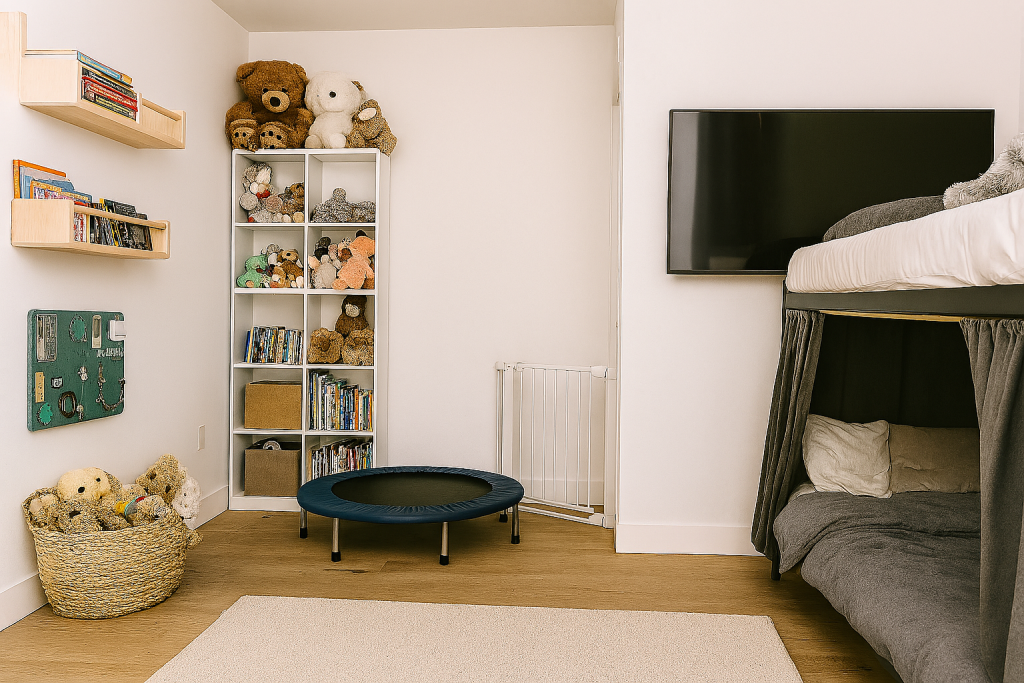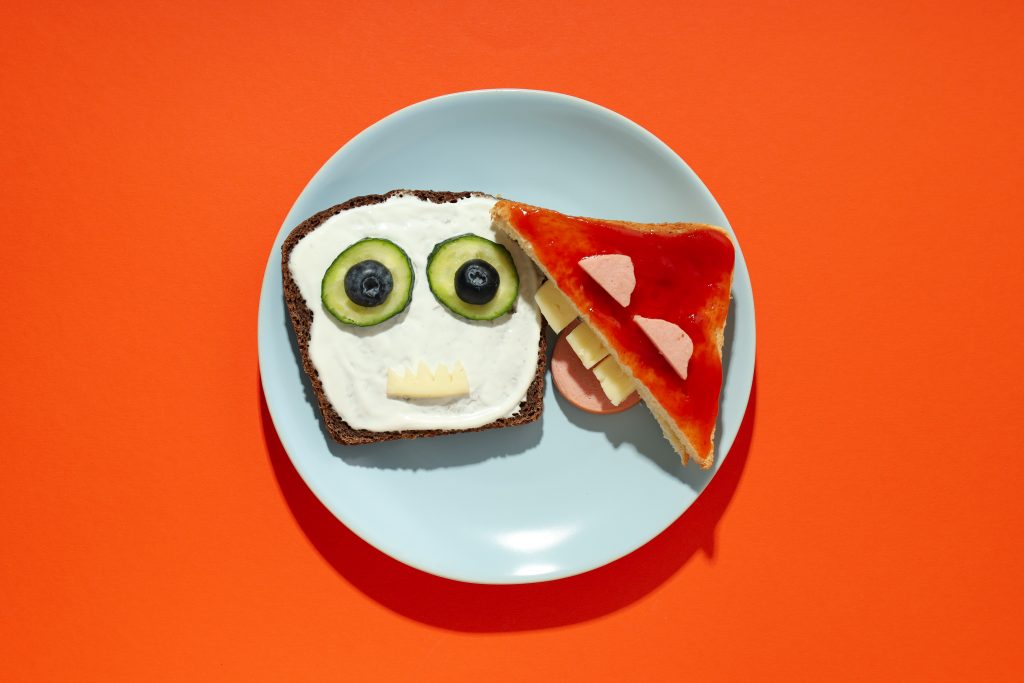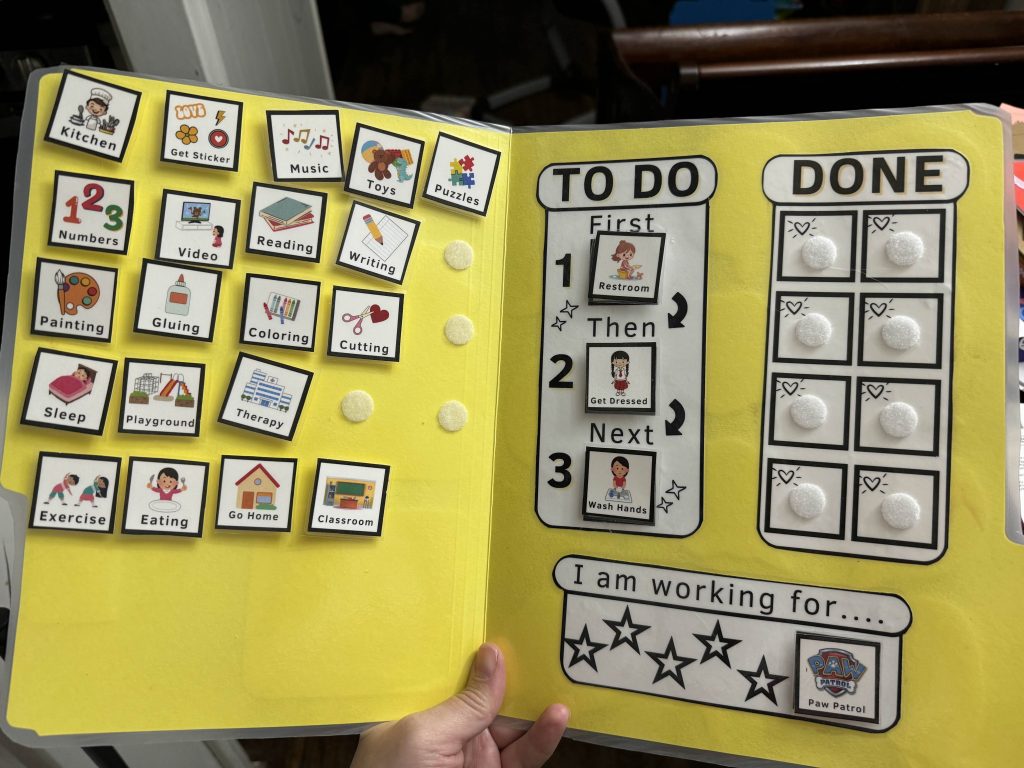As a parent of autistic children, I know the constant anxiety that comes with it. The countless books, podcasts, classes, articles, family, and friends, everyone has an opinion and yet…
Their advice doesn’t work because it’s such a unique experience having an autistic child.
From my experience in special education classrooms to working with autistic adults and being an autistic adult to my own autistic kids, I feel that I can confidently give advice to make parenting an autistic child smoother for your whole family.
We have a lot to get through, so let’s get started!
Here are my Top 5 Tips for Raising an Autistic Child.
Related Article Written By Sam: Parenting an Autistic Child with Confidence: Top 10 Tips

Tip # 1: Safe and Secure Environments are Stress Free
Children on the autism spectrum are attracted to sensory input. It feels good to taste metal or to see the splash of water hit the ground.
It’s not to be malicious or being attracted to danger, it’s as simple as “this feels nice”.
Raising your voice won’t change the behavior because it’s like holding an ice cream cone in front of them.
The real solution to preventing the headaches and the constant stress is to create a safe and secure environment. It doesn’t matter if your child is “older”, what matters is your child’s safety!
Autistic children have different needs from a neurotypical child, and that’s okay.
Here are different ways you can improve the environment and hopefully have a fun, stress-free time with your child:
- Lower sensory input
- Cover or reduce light
- Add white noise machines or fans to rooms
- Make sure the smell is consistent and plain
- Make it safer
- Add baby locks and safety plugs
- Have locks towards the top of the door frame
- Gates everywhere! Prioritize the kitchen
- Tether or bolt down heavy furniture
- Shelves or bookshelves, toys need to be out of reach
- Open spaces are safer for potential falls
- Prepare a Meltdown Space
- Dark: black out the windows
- Small: they might be attracted to closets
- Comfortable: give them pillows to squeeze or throw
- Safe: furniture needs to be bolted or tethered down
As time marches on, you will find yourself predicting their needs, “These stickers will just end up all over my floor, I’ll get a stamp instead.”
I know you may be sacrificing your space for a while to make it safer, but believe me, it’s nice to know my kids are safe both at school and at home. You deserve that peace of mind, too.

Tip #2: Make Easy, Fun Wins
It’s never a great feeling being exhausted or mad. It can be emotional raising an autistic child, and few people outside the community get it.
A secret of mine is never staying mad. If I’m tired or exhausted, I immediately turn to one of my easy wins to end the day with a smile.
My easy wins are outside bubble time, spontaneous dance parties, shadow puppets, and sing-along karaoke, and there’s more where that came from!
The things my easy wins have in common:
- they have virtually no clean up
- they can be done almost anywhere
- they are guaranteed methods of seeing my family smile.
You and your child deserve to be happy. The bumps are going to happen, and that’s okay.
You deserve beautiful memories every day, and you will be happier creating those moments for your family.

Tip # 3: Change Perspective and Get Creative
As I learn more and more about autism, the more SENSE everything makes.
For example, my son throws most veggies and fruit when it’s on his plate. It was frustrating, and I was distressed thinking he wasn’t getting the vitamins he needs.
But, I soon discovered he will eat fruit or veggies in a pouch, and over time, I learned more about low muscle tone and how that can make a lot of “hard” things unappealing to eat.
Soon, I was starting to notice when my kids were having “behavior” issues, it was for genuine reasons!
So changing perspectives and creatively problem-solving helps a lot when conflict arises.
Crying while getting dressed? Let’s do the hokey pokey!
Confused with left and right shoes? Cut stickers in half and put them inside the shoes to make a mini puzzle.
I am constantly finding tricks from mom videos, and it makes life a little more fun as well!
I recommend making a list of common things your child struggles with and genuinely try seeing if there might be a physical or sensory reason they are struggling.
Finding out the root cause helps, but if you can’t, I would focus on making the task:
- Fun
- Consistent
- Easy
Related Article Written By Sam: Autism and Picky Eating: Is Being a Picky Eater a Sign of Autism

Tip # 4: Embrace the Differences in Language
I have mentioned before how in-tune autistic children are to their senses. But it probably hasn’t occurred to you how LOUD that makes life for them.
Between the sounds, smells, touch, etc. it feels like people are constantly yelling at them.
I always struggle to get parents to understand how essential it is to change their language for their autistic kids, and this is why.
Between the sensory overload, the difference in language and perspective, it really is like two cultures clashing!
The most common example of this is shouting a child’s name to call them over. I am telling you right now, they will NOT get it until you have a direct conversation, “When I say your name, it means come here.”
A simple change of using a command with their name, “Morgan, give me a hug.” will have them running over to you.
Imagine ten people yelling at you and one of them says your name. You literally don’t hear it.
But hearing the command? That’s a direct thing to do. I can do that!
This is why sign language, picture boards, and reading can be so much easier for autistic children.
Autism is a sensory disorder. When you keep this fact in mind with your child’s behaviors, , it will make understanding the behaviors easier.
Just as we are expected to be patient and understanding when someone is speaking a different language, we need to translate that to our autistic children.
Prepare to see them bloom once people meet them halfway.
Related Resource Made By Sam: Helping Hands Creations Focus Boards

Tip # 5: Schedules, Routines, and Journaling to Success
Your autistic child is constantly looking for engagement, so learning how to keep the flow going around your house will help to keep the peace.
I LOVE communication and transition folders. A simple “This and Then” chart can make the world of a difference in a household, and science can back up this claim.
But if we know schedules and routines work, why isn’t it being done?
Well, it’s HARD to get them started.
The good news is I can guide you AND provide free materials to make your own!
I am here to tell you, after a year of using them for my autistic child, I was able to “graduate” to visual timers and leave my folder at home.
After two years, they don’t need the folder at all.
Like, of course, we made up a song to sing while brushing our teeth!
It works and while it can be hard to get started, it’s worth the effort because the routine becomes so ingrained in your life that you don’t notice it. Once you practice and develop a routine, it becomes second nature.
We always listen to music and dance when changing our clothes!
Duh, my kid runs back and forth to their folder, and we cheer together when we finish our tasks!
Celebrate your family! Journal your victories and your mistakes, and carry each day as a lesson to make tomorrow a good one.
Related Resource Made By Sam: Make Your Own Transition Folder
From one parent of an autistic child to another, you can do this, and we are all in this together.
